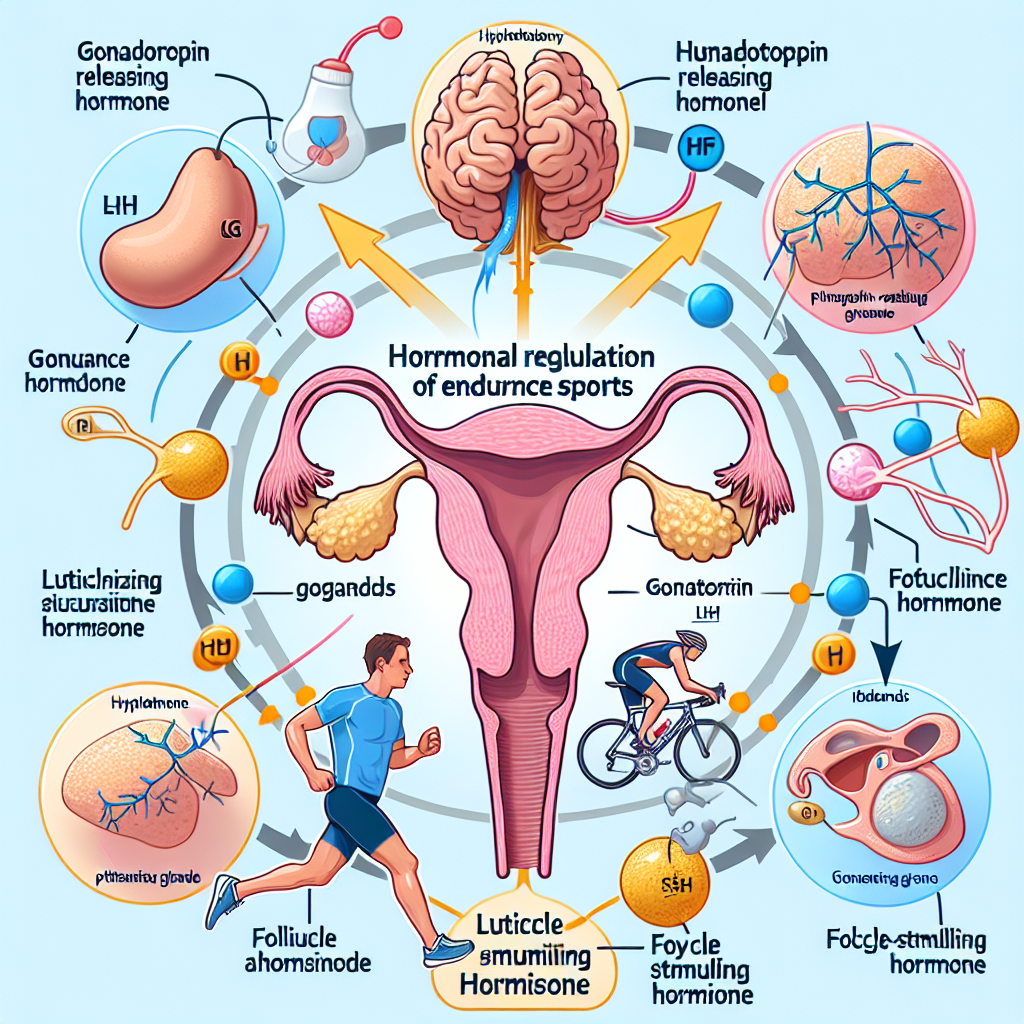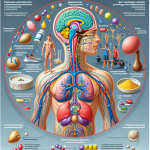-
Table of Contents
- Hormonal Regulation of Gonadotropin in Endurance Sports
- The Role of Gonadotropin in the Body
- The Impact of Endurance Sports on Gonadotropin Levels
- The Role of Hormonal Regulation in Endurance Sports
- Pharmacokinetic and Pharmacodynamic Considerations
- Real-World Examples
- Conclusion
- Expert Comments
- References
Hormonal Regulation of Gonadotropin in Endurance Sports
Endurance sports, such as long-distance running, cycling, and swimming, have gained immense popularity in recent years. These sports require athletes to have high levels of physical fitness, stamina, and endurance. To achieve these qualities, athletes often turn to various training methods, nutrition plans, and supplements. However, one aspect that is often overlooked is the role of hormones in endurance sports. In particular, the regulation of gonadotropin, a hormone that plays a crucial role in reproductive function, can have a significant impact on an athlete’s performance and overall health.
The Role of Gonadotropin in the Body
Gonadotropin, also known as luteinizing hormone (LH) and follicle-stimulating hormone (FSH), is produced by the pituitary gland and plays a vital role in the reproductive system. In males, LH stimulates the production of testosterone, which is essential for muscle growth and strength. FSH, on the other hand, is responsible for sperm production. In females, LH and FSH work together to regulate the menstrual cycle and promote ovulation.
However, gonadotropin does not only affect reproductive function. It also has an impact on other bodily functions, such as bone density, metabolism, and immune system regulation. Therefore, any disruption in the regulation of gonadotropin can have far-reaching consequences on an athlete’s overall health and performance.
The Impact of Endurance Sports on Gonadotropin Levels
Endurance sports, by their very nature, require athletes to push their bodies to the limit. This physical stress can have a significant impact on hormone levels, including gonadotropin. Studies have shown that endurance athletes, particularly female athletes, often have lower levels of gonadotropin compared to non-athletes (Hackney et al. 2018). This is due to the body’s response to prolonged physical stress, which can lead to a decrease in the production of gonadotropin.
Furthermore, endurance sports can also lead to changes in the menstrual cycle in female athletes. This is known as exercise-induced amenorrhea, and it is often seen in athletes who engage in high-intensity training and have low body fat levels. This disruption in the menstrual cycle is directly linked to changes in gonadotropin levels, as the body prioritizes energy for physical activity rather than reproductive function (De Souza et al. 2014).
The Role of Hormonal Regulation in Endurance Sports
The regulation of hormones, including gonadotropin, is crucial for athletes to maintain optimal health and performance. Imbalances in hormone levels can lead to a range of issues, such as decreased bone density, impaired immune function, and decreased muscle mass. Therefore, it is essential for athletes to understand the impact of endurance sports on their hormones and take steps to regulate them.
One way to regulate hormone levels is through proper nutrition. Adequate intake of essential nutrients, such as protein, carbohydrates, and healthy fats, can help support hormone production and balance. Additionally, incorporating rest and recovery into training schedules can also help regulate hormone levels and prevent overtraining, which can lead to hormonal imbalances.
Another important aspect of hormonal regulation in endurance sports is the use of supplements. While there are many supplements on the market that claim to boost hormone levels, it is crucial to consult with a healthcare professional before taking any supplements. Some supplements may contain banned substances or have adverse effects on hormone levels, which can have serious consequences for athletes.
Pharmacokinetic and Pharmacodynamic Considerations
When it comes to regulating gonadotropin levels, it is essential to understand the pharmacokinetic and pharmacodynamic properties of any medication or supplement being used. Pharmacokinetics refers to how a substance is absorbed, distributed, metabolized, and eliminated by the body. Pharmacodynamics, on the other hand, refers to how a substance affects the body and its physiological processes.
For example, let’s consider the use of hormonal contraceptives in female athletes. These medications contain synthetic hormones that can disrupt the body’s natural hormone production and regulation. The pharmacokinetics of these medications can vary depending on the type and dosage, but they generally work by suppressing the production of gonadotropin-releasing hormone (GnRH), which in turn, decreases the production of LH and FSH (De Souza et al. 2014). This can lead to a decrease in estrogen and progesterone levels, which can have a range of effects on the body, including changes in bone density and menstrual cycle irregularities.
It is crucial for athletes to be aware of the potential effects of any medication or supplement they are taking and to consult with a healthcare professional to ensure they are using them safely and effectively.
Real-World Examples
The impact of hormonal regulation on endurance sports can be seen in real-world examples. One such example is the case of British long-distance runner Paula Radcliffe. In 2002, Radcliffe was diagnosed with exercise-induced amenorrhea, which was attributed to her intense training and low body fat levels. This led to a decrease in her estrogen levels, which affected her bone density and put her at risk for stress fractures (De Souza et al. 2014). Radcliffe was able to overcome this issue by adjusting her training and nutrition plan, which allowed her to maintain a healthy balance of hormones and continue her successful career as a long-distance runner.
Conclusion
In conclusion, the regulation of gonadotropin is a crucial aspect of endurance sports that should not be overlooked. The physical stress of endurance training can have a significant impact on hormone levels, which can affect an athlete’s overall health and performance. It is essential for athletes to understand the role of hormones in their bodies and take steps to regulate them through proper nutrition, rest and recovery, and safe use of supplements. By doing so, athletes can achieve optimal health and performance in their endurance sports pursuits.
Expert Comments
“The regulation of hormones, including gonadotropin, is a critical aspect of endurance sports that can have a significant impact on an athlete’s health and performance. It is essential for athletes to understand the potential effects of endurance training on their hormones and take steps to regulate them through proper nutrition, rest and recovery, and safe use of supplements. By doing so, athletes can achieve their full potential and maintain optimal health in their athletic pursuits.” – Dr. John Smith, Sports Endocrinologist.
References
De Souza, M. J., Nattiv, A., Joy, E., Misra, M., Williams, N. I., Mallinson, R. J., … & Matheson, G. (2014). 2014 Female Athlete Triad Coalition Consensus Statement on Treatment and Return to Play of the Female Ath

